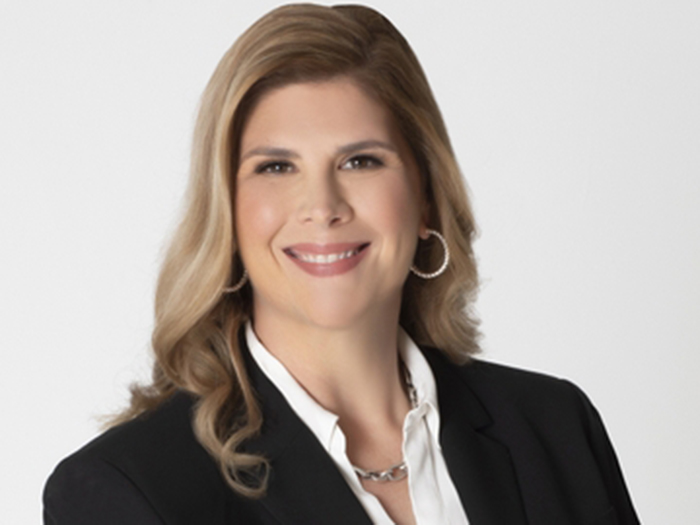Employee Benefits: Education
Scrambling for Cover

School districts have been forming insurance purchasing pools for decades to trim their premium rates, and the trend is accelerating as they face financial pressure from hobbled state and municipal budgets, new state laws and the Patient Protection and Affordable Care Act (ACA).
Even though the trend is accelerating, pooling faces a number of challenges. For example, some rural districts’ attempts to create or join a pool may be frustrated by carrier-imposed size requirements.
Scott R. Baldwin, managing director of the public sector practice, Arthur J. Gallagher & Co., said some “big carriers” that dominate the health care insurance market in rural areas decline to insure small- and mid-size districts that could benefit from joining or forming purchasing pools.
A district that joins a pool may not be able to find coverage in its region, even with the same carrier that covered it on a stand-alone basis. Most carriers will fully insure a school district with as few as 20 employees on a stand-alone basis.
“It may not be in the best financial interest of insurance companies to participate in coalition planning,” Baldwin said. It makes financial sense for the districts, however, especially those with proper stop-loss coverage and adequate funding. But once a district joins a pool, a carrier may drop its coverage — and all of the other districts in that pool.
“It may not be in the best financial interest of insurance companies to participate in coalition planning.” — Scott R. Baldwin, managing director, public sector practice, Arthur J. Gallagher & Co.
The cutoff for health care coverage, Baldwin said, is at about 150 covered lives for pools. At 150 and above, most major carriers are willing to provide stop loss, PPO network access and claim administration services to pools. Not all states permit joint purchasing agreements, and those that do impose stiff regulations on their operation, Baldwin said.
Another challenge for school districts is that changing carriers can be challenging.
Mobility between carriers can be somewhat restricted for California school districts, even those that are fairly large, said Deb Mangels, senior vice president of employee benefits and founding principal of ABD Insurance and Financial Services. Due to industry-standard marketing and underwriting guidelines, a school district can be “handcuffed” to the giant managed care consortium Kaiser Permanente.
This reflects a combination of demographics and logistics. A significant number of public employees residing in the heavily populated regions of California receive health care from Kaiser through the California Public Employees’ Retirement System (CalPERS). But Mangels said underwriting data for small- to mid-sized pools is hard to come by.
“Getting claims data out of Kaiser for groups under 5,000 is nearly impossible,” Mangels said, and without good information on a group’s claims experience, prospective carriers are unable to project future claims costs either as a stand-alone district or as part of a pool.
With more than 1,000 school districts and more than 144,000 teachers in California, plus their families and more than 250,000 eligible retirees, health care programs and associated costs are a “huge” issue, Mangels said.
Cadillac Tax Driving Change
The ACA imposes yet another challenge for school districts. The High-Cost Employer-Sponsored Health Coverage Excise Tax provision of the ACA — the “Cadillac tax” — pressures public school teachers to shoulder more of the costs of their historically generous health care benefits.
When it takes effect in 2018, the Cadillac tax will impose a 40 percent levy on individual health plans above $10,200 for individuals and $27,500 for family coverage, with both employer and worker contributions included. The tax applies to both insured and self-funded plans.
Mangels sees preparing school districts and unions for the ramifications of the Cadillac tax as an essential part of the broker’s role. Education of union reps is particularly important.
“If they aren’t comfortable with information we provide, they won’t communicate it to their members accurately,” Mangels said.
John Abraham, director of worker benefits and capital strategies for the American Federation of Teachers (AFT), said the quality of health care plans has not diminished among unionized school districts, but notes “a big push” among employers to higher deductible plans because doing so helps them avoid the Cadillac tax.
However, fewer than 5 percent to 10 percent of teachers currently choose that option. Most older, experienced teachers with families opt for traditional HMOs and PPOs.
“Benefits have eroded to the extent that teachers contribute more to premiums and pay higher deductions.” — Mike Nault, executive director, human resources, Oshkosh Area School District
Where states have been aggressive in reforming benefit packages for schoolteachers, the results have been mixed.
Three and a half years after the passage of Act 10 in Wisconsin, the Oshkosh Area School District struggles to maintain teachers’ health care benefits and give them pay raises that at least keep up with cost of living increases.
“Benefits have eroded to the extent that teachers contribute more to premiums and pay higher deductions,” said Mike Nault, executive director of human resources, Oshkosh Area School District.
The law requires state employees to pay at least 12.6 percent of the average cost of annual premiums, and it requires changes in plan design to reduce current premiums by 5 percent. Wisconsin is considering switching from its HMO model to self-insurance.
The passage of Act 10 also requries districts to go to bid for health care insurance, rather than specifying carriers. “The competition made the carriers sharpen their pencils,” Nault said. “We get a fairly decent product at a lower price.”
Although many teachers are reconciled to paying more of their health care insurance costs, many are pushing back at what they perceive as an assault on their benefits, pay and general respect.
Sandi Fisher, a 5th grade teacher at a public school in the depressed Kensington neighborhood of Philadelphia, said she can’t make an appointment with some of her medical providers because they’ve opted out of her Keystone HMO plan.
Still, she said, “no one’s complaining about making contributions. It’s everything else they’re taking away.” The district doesn’t reliably provide classroom supplies, such as paper. And it wants teachers to give back up to 13 percent of their salaries to the district in addition to taking the cuts in benefits.
“No one’s complaining about making contributions. It’s everything else they’re taking away.” —Sandi Fisher, teacher, School District of Philadelphia
Relations between the School District of Philadelphia and the Philadelphia Federation of Teachers are so acrimonious that the district’s School Reform Commission voted last fall to cancel the union contract and impose new health care terms on the union. In a victory for the union, the Pennsylvania
Commonwealth Court ruled on Jan. 22 that the district may not restructure the collective bargaining agreement between the teachers union and the school district, sending the warring parties back to the negotiating table.
The discord in the Philadelphia system is “indicative of what’s going on in the country,” although that is magnified by the large size of the metropolitan school district, said Baldwin.
Cost-Cutting Strategies
For school districts that use substitute teachers, their hours present a challenge under the ACA.
Historically, said Dr. Frank Vail, director of insurance services, South Carolina School Boards Association, substitute teachers didn’t get benefits, but under the ACA, they do if they work enough hours to be considered full-time workers.
“The problem is how to track and keep records,” he said, since several recordkeeping formulas apply.
“Some districts have contracted out substitute teaching to companies like Kelly so they don’t have to deal with it.”
Others, said Abraham of the AFT, have cut teachers’ hours to avoid the mandate to offer insurance to full-time employees. “That wasn’t the intention of the mandate. Where employers don’t work with us on ways to mitigate the impact of the employer mandate, it’s a mess.”
Wellness programs are a more welcome cost-cutting strategy, both for health care, and worker’s compensation insurance and claims, which are a school district’s biggest insurance cost, according to Michael McHugh, area senior executive vice president, public and nonprofit division, Arthur J. Gallagher & Co.
For example, many Wisconsin districts have implemented health risk assessments and introduced on-site or near-site clinics, a convenient, lower-cost form of health care.
Wisconsin’s Act 10 requires health risk assessments aimed at participant wellness and collection of data related to assessing the quality and effectiveness of health care providers.
Daniel Wolak, president, Union Labor Life Insurance, sees a trend to freestanding, on-site clinics staffed by full-time doctors and nurses, such as the ones in Wisconsin.
“These clinics act as gatekeeper,” he said, directing teachers to pricier specialists only when necessary. They also free up the teachers’ own doctors to spend more time with their patients when they make office visits.
The push for wellness, however, introduces privacy concerns, Abraham said.
“Individuals worry when employers ask about their health status. They ask, ‘Will I get fired because I’m using health care benefits? Will my premium go up?’ ”
And then there are administrative decisions: Penalties or incentives? An additional $50 on premiums for employees who don’t do the health screens or a $50 gift card for those who do?
“All districts want to take care of their kids’ teachers. … There’s no one-size-fits-all solution.” — Norman Reisman, retired benefits consultant, multiemployer funds
Insurance companies, working with school districts, unions or coalitions, can adjust plan design to trim premium costs, said Norman Reisman, a recently retired benefits consultant with more than 40 years of health care insurance experience in multiemployer funds. Pharmacy benefits are “the fastest-growing chunk of health care spend,” he said.
Plans can save money by encouraging the use of generics and incenting mail order instead of retail prescriptions. These small moves save “a lot” of money. Plans can also require greater member contributions and tighten up eligibility requirements, Reisman said.
“All districts want to take care of their kids’ teachers,” Reisman said, but federal and state laws, the prevailing culture and the district’s financial health all play a role.
“There’s no one-size-fits-all solution,” he said.










